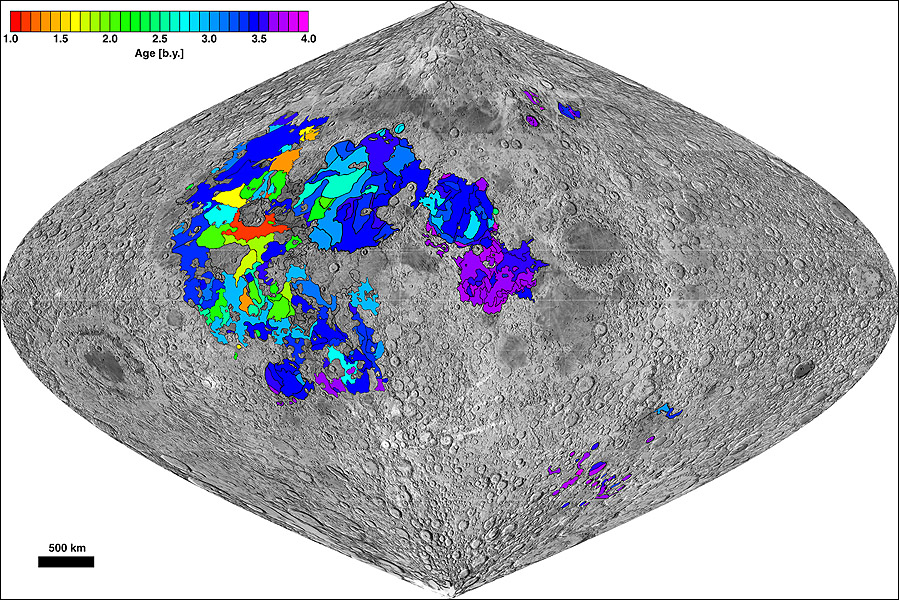
age map from Harry Hiesinger, Münster, Germany
Apollo missions sampled lunar rocks at five places on the maria (not counting Apollo 16), determining that volcanism largely occurred between 3.2 and 4.0 billion years ago. In the 1970s Bill Hartmann and others counted the numbers of impact craters on these surfaces of known age, and then created a curve linking the number of impact craters and the dated ages for the landing sites. More recently Harry Hiesinger and his colleagues refined the estimates of ages of many mare surfaces by using the colored images from Clementine to identify mare volcanic units that were likely to be chemically homogeneous and then counting craters on them using the high resolution Lunar Orbiter IV photographs. This is by far the most careful crater counting and model age determinations on the Moon, and the map above gives the results. The first thing it shows is that there are a number of places where lavas are much younger than any collected by the Apollo astronauts. Secondly, it looks like ages are not distributed at random. The oldest lavas nearly all occur in the eastern hemisphere (except for a smidgen east of Humorum). And the youngest lavas all occur in the western hemisphere, especially near the Aristarchus Plateau. A possible interpretation is that older lavas may have occured everywhere, but have been largely covered in the west by younger ones. The longer duration of volcanic eruptions in the Procellarum area is probably related to the enhanced levels of radioactive rocks that is pretty much restricted to the area of the northwestern maria. With the coming availablity of significantly higher resolution images from SMART-1 and Indian, Japanese, Chinese and US lunar orbiters it will be possible to improve these crater counts and age estimates and extend them to all the maria. And someday, when LPOD is in its 16th year, US astronauts (and probably Chinese ones too) will again bring rocks from the Moon to be radiometrically dated.
Related Links:
Hiesinger, H., Head, J.W.III., Wolf, U., Neukum, G., (2003). Ages and stratigraphy of mare basalts in Oceanus Procellarum, Mare Nubium, Mare Cognitum, and Mare Insularum. J. Geophys. Res., 108, 10.1029/2002JE001985
Yesterday's LPOD: Better the Second Time Around
Tomorrow's LPOD: Narrow View with Wide Implications
COMMENTS?
Register, Log in, and join in the comments.



